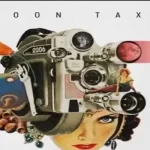Ambient music is a captivating genre that diverges from traditional musical norms by prioritizing atmosphere and tone over conventional structures like rhythm and melody. It transports listeners to unique auditory landscapes, fostering both passive relaxation and active introspection. The hallmark of ambient music lies in its ability to evoke a sense of calm, allowing individuals to immerse themselves in its intricate soundscapes. From the gentle rustling of leaves to the synthetic emulation of acoustic instruments, ambient music traverses a wide spectrum of auditory experiences.
Origins
Ambient music’s roots can be traced back to the early 20th century, where Erik Satie, a French composer, introduced the concept of “furniture music” or “Musique d’ameublement.” Satie envisioned this form of music as a subtle backdrop that blends seamlessly with the environment, enhancing the overall atmosphere rather than demanding attention. He believed that such music could soften the edges of social interactions and create a soothing backdrop for various activities, like dining with friends. This notion laid the foundation for the ambient genre’s focus on blending into the surroundings.
Influence of Early Innovators
In 1948, Pierre Schaeffer, a French composer and engineer, introduced “musique concrète,” which involved manipulating recordings of natural sounds to craft compositions. This technique marked a precursor to modern sampling, an integral aspect of ambient music production. John Cage, a prominent figure in experimental music, also played a role in shaping the genre’s trajectory with his composition “4’33”,” which invited listeners to embrace the ambient sounds of their environment. These innovations set the stage for the gradual emergence of ambient music in the decades to come.
Characteristics of Ambient Music – Creating Sonic Landscapes of Tranquility
Ambient music stands as a unique and captivating genre, distinguished by its distinct characteristics that set it apart from traditional musical forms. Rooted in the exploration of atmosphere and mood rather than structured melodies and rhythms, ambient music offers listeners an immersive experience that encourages relaxation, contemplation, and a sense of calm. Let’s delve into the key characteristics that define ambient music and contribute to its enduring appeal.
Atmosphere Over Structure:
At the core of ambient music lies a shift in focus from traditional musical structures to the creation of evocative atmospheres. Unlike conventional genres, where melodies and rhythms take center stage, ambient music crafts sonic landscapes that envelop the listener in a world of sound. This prioritization of atmosphere allows for a more open and expansive sonic canvas.
Minimalistic Approach:
Ambient music often employs a minimalistic approach, using a sparse arrangement of musical elements. This minimalism allows for a more immersive experience, where every sound and note becomes significant. By stripping away excessive ornamentation, ambient music creates space for listeners to engage with their emotions and thoughts.
Texture and Layering:
Textural complexity is a hallmark of ambient music. Artists manipulate various sonic layers, combining different sounds, timbres, and frequencies to build rich and intricate sonic tapestries. These layers intertwine, creating a sense of depth that draws listeners into the music’s environment.
Repetition and Looping:
Repetition and looping are key techniques in ambient music composition. Patterns and motifs may repeat over extended durations, reinforcing the immersive quality of the music. These repetitions contribute to a meditative and trance-like state, enabling listeners to lose themselves in the sonic experience.
Embracing Silence:
Ambient music recognizes the power of silence as a sonic element. Intentional pauses and spaces between notes allow for moments of reflection and anticipation. The interplay between sound and silence enhances the contemplative nature of the genre, inviting listeners to engage with their inner thoughts.
Environmental Sounds:
Incorporating sounds from the natural world is a common practice in ambient music. Field recordings of nature, such as flowing water, bird calls, and rustling leaves, introduce a sense of tranquility and connection to the environment. These sounds serve as a bridge between the musical and natural realms.
Fluidity and Ephemeral Quality:
Ambient music often lacks a strict sense of time, making it feel timeless and fluid. This characteristic allows for a seamless transition between different sonic elements and moods. The music’s ephemeral quality evokes a sense of detachment from the constraints of everyday life.
Non-Intrusive and Versatile:
Ambient music is designed to coexist harmoniously with various activities, whether it’s reading, studying, meditating, or simply resting. Its non-intrusive nature allows listeners to engage with it on different levels of attention. It can function as both a primary focus and a subtle backdrop, adapting to the listener’s needs.
Emotional Resonance:
Despite its lack of conventional melodies and lyrics, ambient music carries a deep emotional resonance. The carefully chosen timbres, textures, and progressions evoke feelings of introspection, nostalgia, calmness, and even melancholy. The emotional journey is facilitated by the space for individual interpretation.
Experimentation and Boundless Creativity:
Ambient music encourages experimentation and innovation. Artists explore a wide range of sound sources, from acoustic instruments to electronic synthesizers, and incorporate unconventional techniques. This spirit of creativity has led to the genre’s continuous evolution and the emergence of subgenres and hybrid forms.
1960s and the Emergence of Minimalism
The 1960s witnessed an influx of experimentation in music, with various groups venturing into unconventional techniques. Composers like Ramon Sender and Morton Subotnick established The San Francisco Tape Music Center, exploring electronic music’s potential. This period paved the way for the development of minimal music, characterized by repetitive patterns, steady drones, and consonant harmony—traits shared with ambient music.
Brian Eno: The Ambient Pioneer
The genre’s significant breakthrough came in the late 1970s when British musician Brian Eno released his album “Ambient 1: Music for Airports.” Eno not only popularized the term “ambient music” but also provided a clear definition of the genre’s purpose. He envisioned ambient music as a tool for enhancing environments, inducing calmness, and allowing room for contemplation. Eno’s artistic vision reshaped the trajectory of ambient music and set the stage for its subsequent evolution.
Evolution in the 1980s and 1990s
The 1980s saw the expansion of ambient music’s sonic landscape. With the rise of digital technologies, musicians began incorporating sampling and synthesizers to create intricate soundscapes. The fusion of acoustic and electronic instruments, as exemplified by Laraaji’s “Day of Radiance” and Éliane Radigue’s pioneering work with the ARP 2500 synthesizer, further enriched the genre. Additionally, the emergence of artists like The Orb, Aphex Twin, and Global Communication in the 1990s diversified ambient music’s sonic possibilities, leading to its integration into mainstream culture.
Ambient music artists
| Artist | Contribution | Notable Works |
|---|---|---|
| Erik Satie | Pioneered the concept of “furniture music,” laying the groundwork for ambient music’s focus on blending with the environment. | “Gymnopédies,” “Socrate,” “Gnossiennes” |
| Brian Eno | Coined the term “ambient music” and popularized the genre’s purpose of enhancing environments and inducing calmness. | “Ambient 1: Music for Airports,” “Discreet Music” |
| John Cage | Introduced the idea of embracing ambient sounds of the environment, influencing the genre’s emphasis on auditory immersion. | “4’33”,” “Music of Changes” |
| Laraaji | Introduced acoustic instruments to the ambient genre, expanding its sonic palette beyond electronic and synthesized sounds. | “Day of Radiance,” “Ambient 3: Day of Radiance” |
| Éliane Radigue | Pioneered the use of synthesizers in ambient music, creating long, slow compositions that are often compared to drone music. | “Jetsun Mila,” “Trilogie de la Mort” |
| The Orb | Contributed to the popularization of ambient house and ambient techno, infusing electronic beats and elements into the genre. | “The Orb’s Adventures Beyond the Ultraworld” |
| Aphex Twin | Brought ambient music to a wider audience by incorporating it into his diverse electronic productions, including intricate soundscapes. | “Selected Ambient Works Volume II,” “Selected Ambient Works 85-92” |
| Global Communication | Merged ambient music with dance music, contributing to the development of the ambient house subgenre. | “76:14,” “Pentamerous Metamorphosis” |
| Grouper | Created dreamy and ethereal soundscapes through looped vocals and experimental techniques, gaining acclaim for her ambient contributions. | “Dragging a Dead Deer Up a Hill,” “Ruins” |
| Max Richter | Blended classical and electronic elements in his ambient compositions, crafting emotionally evocative soundscapes. | “Sleep,” “The Blue Notebooks” |
| Julianna Barwick | Crafted ethereal soundscapes through looped vocals and a church choir background, infusing her works with a unique atmospheric quality. | “The Magic Place,” “Nepenthe” |
| Kaitlyn Aurelia Smith | Utilized Buchla synthesizers and traditional instruments to create intricate and captivating ambient compositions. | “EARS,” “The Mosaic of Transformation” |
| The Caretaker | Explored themes of memory and nostalgia through manipulated samples and ambient textures, offering a unique perspective on the genre. | “An Empty Bliss Beyond This World,” “Everywhere at the End of Time” |
| Stars of the Lid | Created deeply immersive ambient soundscapes with the use of orchestral instruments, gaining recognition for their cinematic qualities. | “The Tired Sounds of Stars of the Lid,” “And Their Refinement of the Decline” |
| Susumu Yokota | Infused ambient music with a distinct Japanese influence, often using dreamy and processed guitar sounds to create his signature style. | “Sakura,” “ |
Ambient Music in the Digital Age
The 2000s and 2010s marked a renaissance for ambient music with the proliferation of online platforms. YouTube, in particular, became a haven for extended ambient compositions, attracting millions of listeners seeking relaxation, focus, and tranquility. Artists such as Max Richter, Julianna Barwick, and Grouper garnered acclaim for their contributions to the genre. Moreover, the advent of streaming services like iTunes and Spotify provided dedicated ambient music channels, further solidifying the genre’s presence.
Ambient music is a genre
Ambient music is a genre known for its atmospheric and immersive qualities. It often emphasizes texture, tone, and mood over traditional musical structure. Over the years, various subgenres and styles have emerged within the broader category of ambient music. Here’s a list of some ambient music genres:
- Traditional Ambient: The original form of ambient music pioneered by artists like Brian Eno. It focuses on creating a tranquil and reflective atmosphere.
- Dark Ambient: Characterized by its eerie and sometimes unsettling soundscapes, dark ambient often incorporates industrial elements and explores darker, more introspective themes.
- Space Ambient: This genre aims to evoke a sense of cosmic vastness and exploration. It often includes spacey textures, ethereal sounds, and a feeling of weightlessness.
- Drone Ambient: Drone ambient music is characterized by sustained tones or drones that can create a hypnotic and meditative listening experience.
- Minimal Ambient: As the name suggests, this subgenre emphasizes minimalism and simplicity. It uses a limited number of elements to create a calming and introspective mood.
- Neo-Classical Ambient: This genre combines ambient textures with classical instrumentation or composition, resulting in a blend of classical and ambient elements.
- Ethnic Ambient: Ethnic ambient music incorporates traditional instruments and sounds from various cultures around the world to create unique and immersive sonic landscapes.
- Chillout: While often associated with electronic music, chillout incorporates ambient elements to create a relaxed and laid-back atmosphere.
- Nature Ambient: Nature-inspired ambient music incorporates sounds from the natural world, such as flowing water, birdsong, and wind, to create a sense of being in a specific environment.
- Glitch Ambient: This subgenre incorporates digital glitches, errors, and artifacts into ambient textures, creating a more experimental and sometimes disorienting sound.
- Psybient/Psychill: Psybient (psychedelic ambient) or psychill (psychedelic chillout) blends ambient music with psychedelic and trance elements, resulting in a trippy and mind-expanding sound.
- Meditative Ambient: Specifically designed to induce relaxation and meditation, this genre often incorporates elements like binaural beats and repetitive patterns.
- Cinematic Ambient: This type of ambient music is often used in film soundtracks to create mood and atmosphere. It can range from subtle background textures to more prominent thematic elements.
- Experimental Ambient: Pushing the boundaries of traditional ambient music, experimental ambient explores unconventional soundscapes, textures, and sonic structures.
- Fourth World Music: Coined by musician Jon Hassell, this genre blends elements of various world music traditions with ambient and electronic sounds, creating a fusion of global influences.








